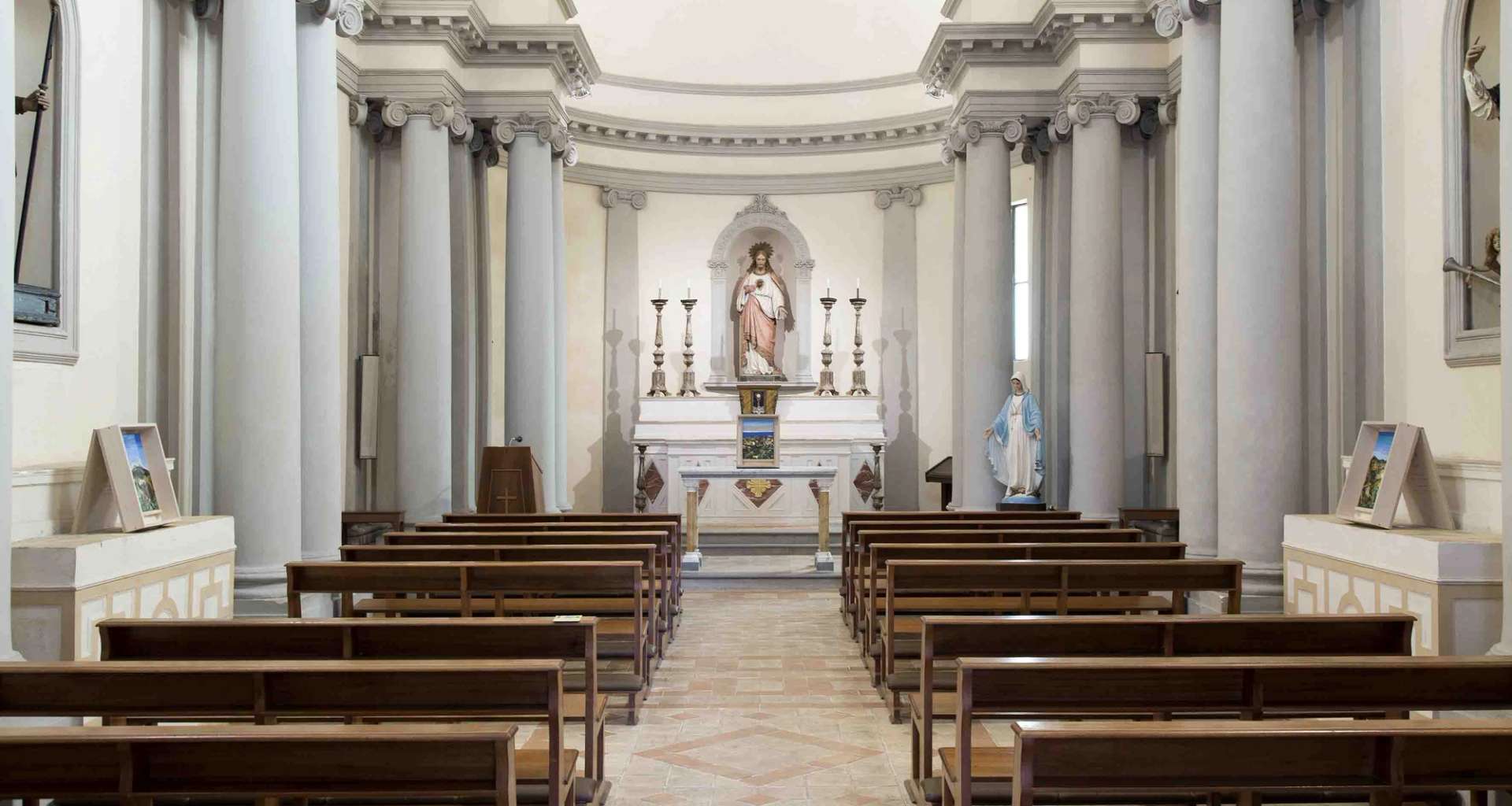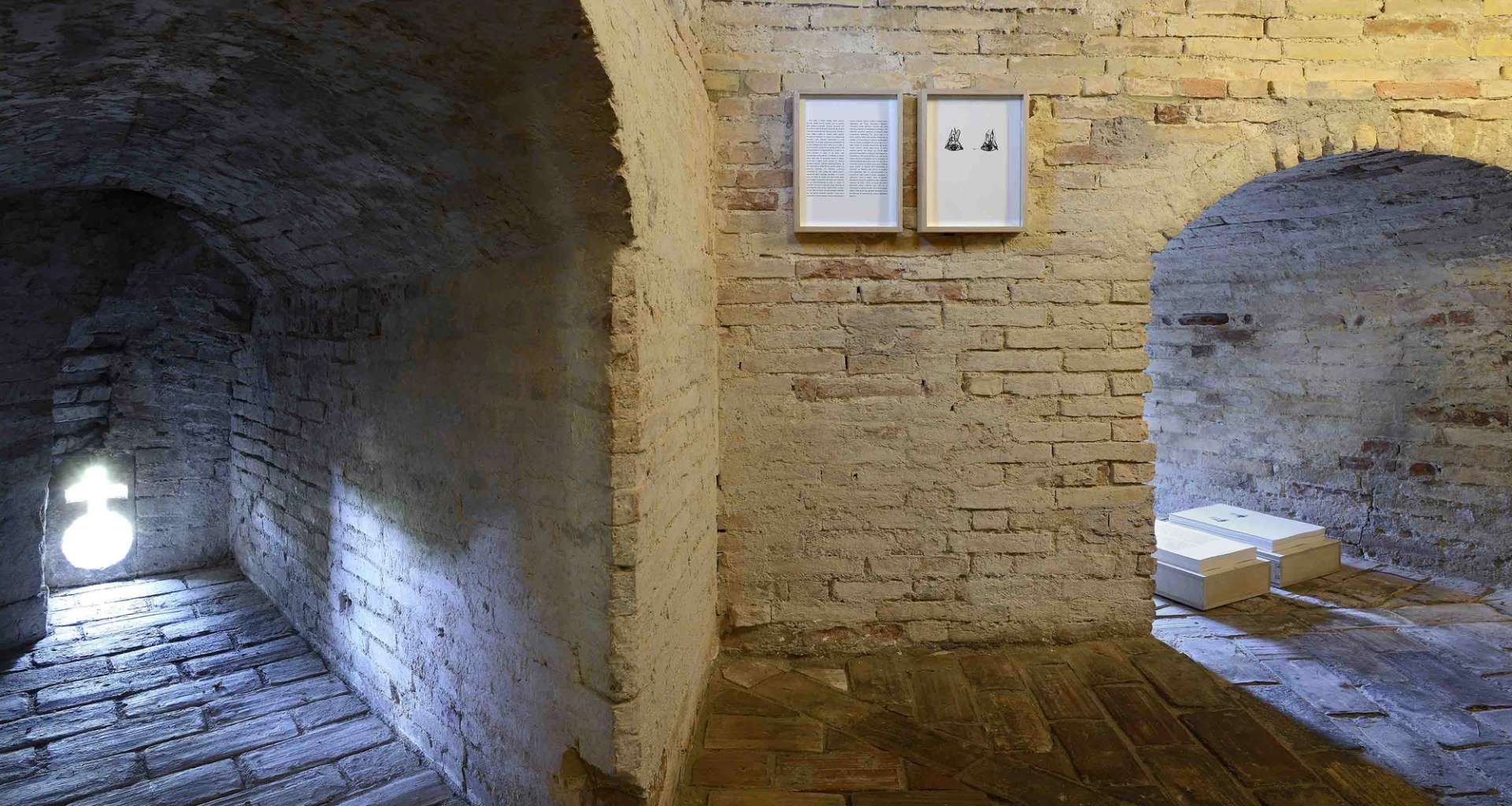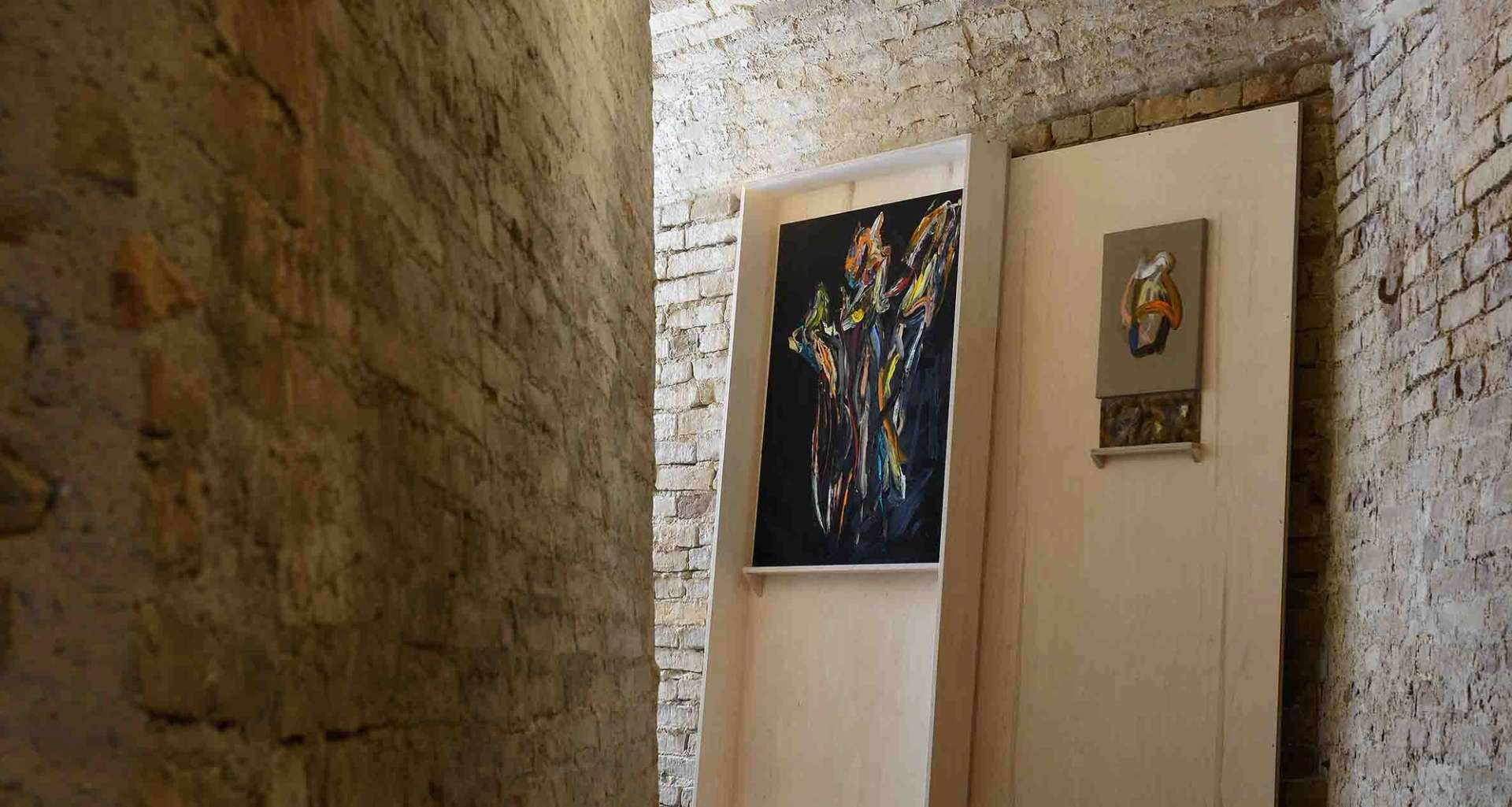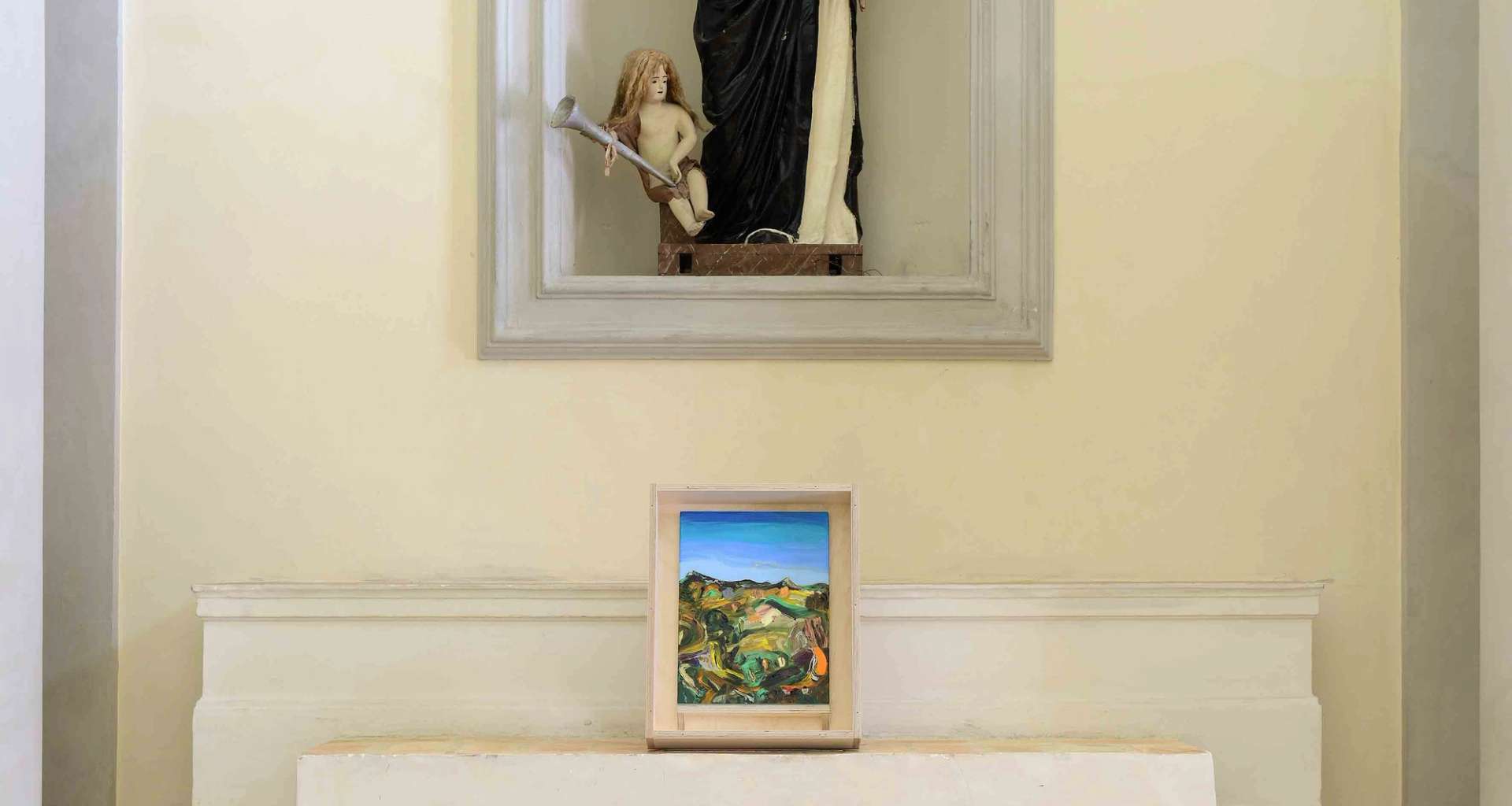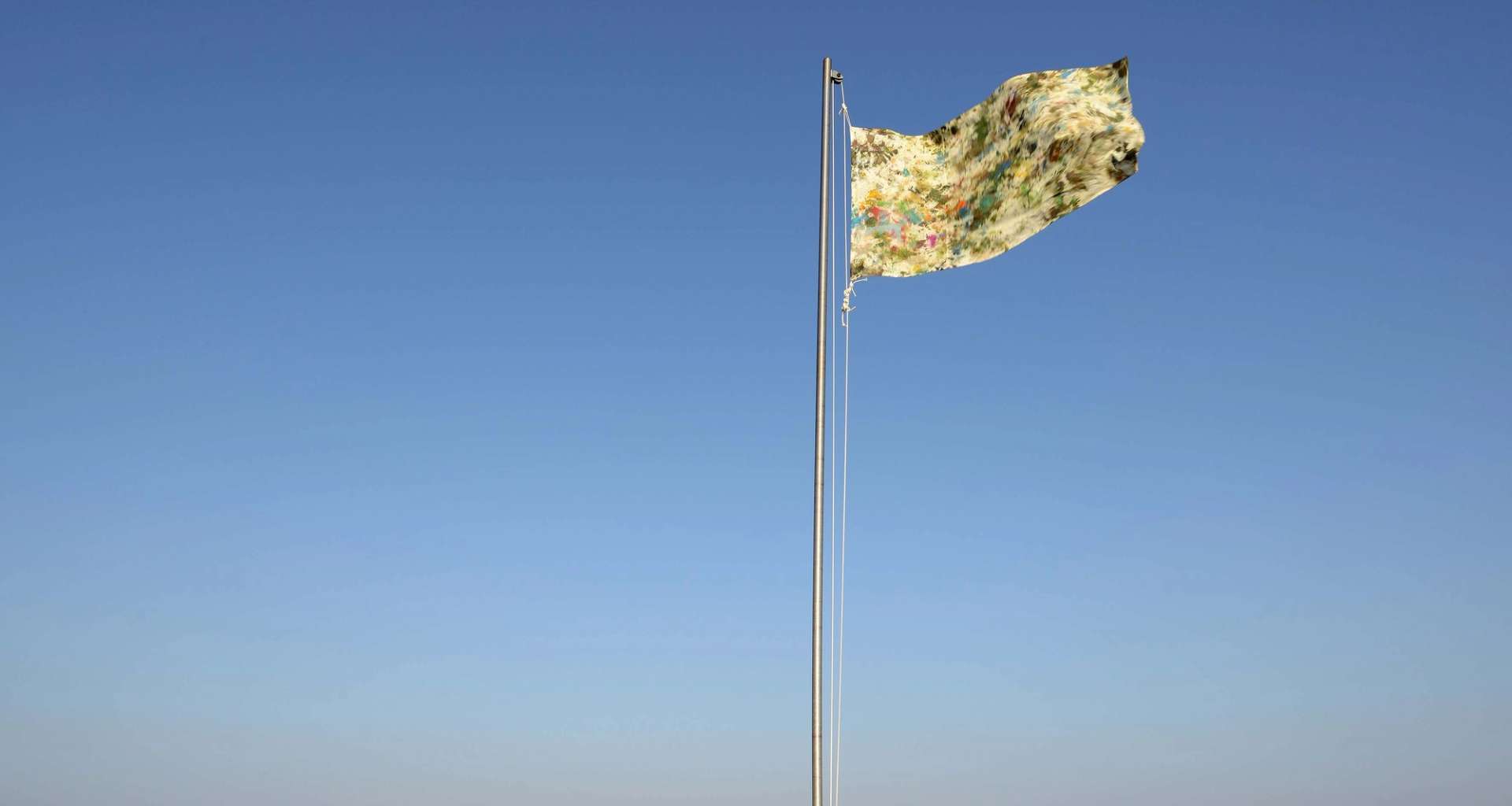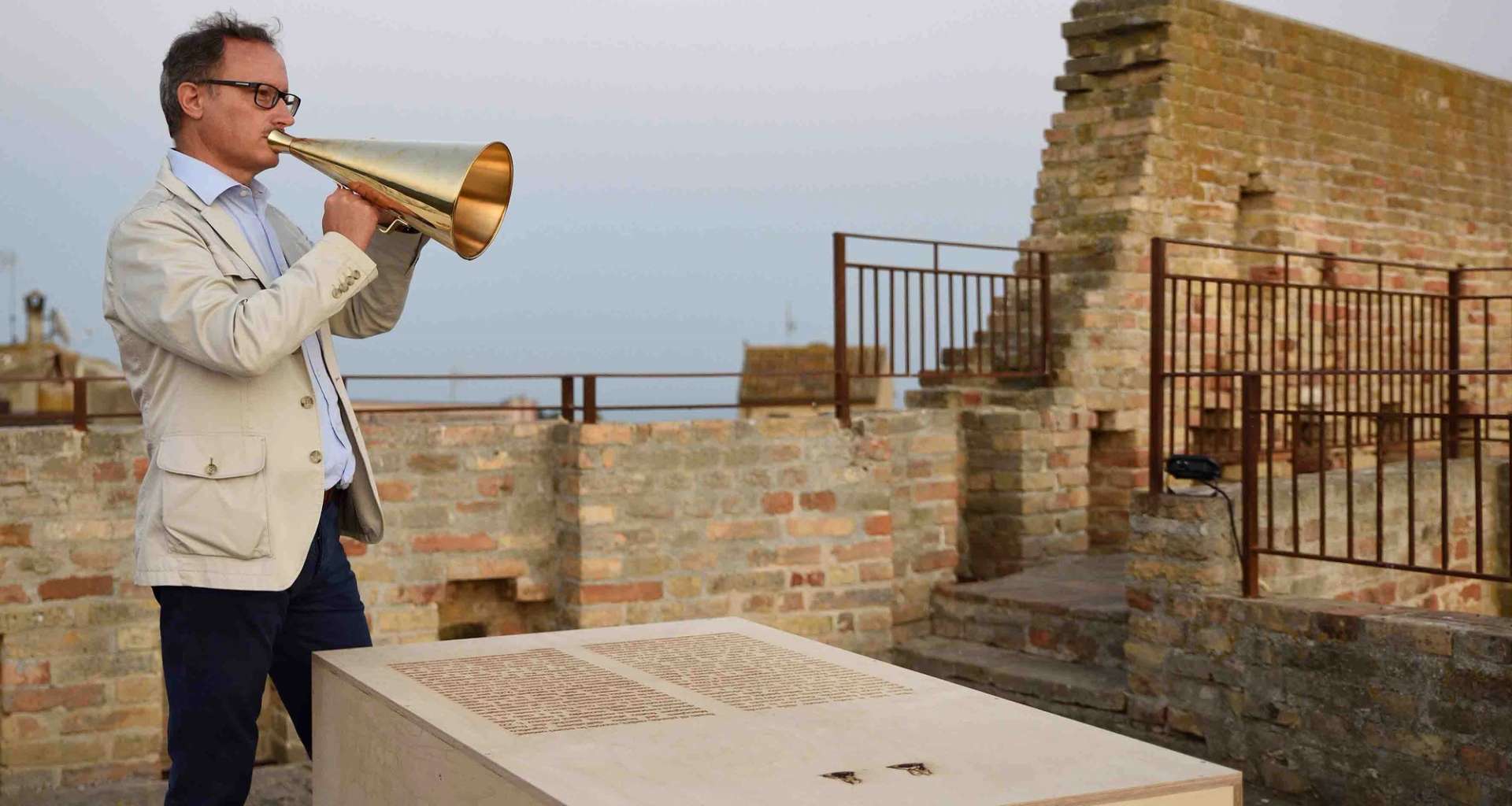Fato’s work meanders in the space where sky and earth do not belong to the word; it lights the village via an ancient-flame, nurtured through the lens of art and the verses of Giovanni della Croce. In the centuries-old medieval hamlet, the term “fuochi” referred to resident families, so Fato, with Fiamma d’Amore Viva, returns to the theme, marking an intimate space and bring about vibrant moments open to interpretation. Simultaneously, Fato reconnects to the metaphorical communicative function of the flame, from the watchtowers. In the Fortezza, some works at the center of actions documented and projected inside one of the towers see their meaning deepened through signs of transit, both of recent history and of the present. In the west tower, a sculpture, keeping its memory alive, meets the flame. Meanwhile, at the top of the south tower, a wooden seat with a fire engraved text by Gianni Garrera, read aloud at the inauguration, designates another landscape-lookout point. This is also the case for the work-vessel, hoisted up on the keep and marked by painting residue, regenerated via exposure to the elements. In the village’s tiny streets, three paintings inspired by a votive aedicule with a silver Madonna set in the wall, prompt the visitor to contemplate the indissoluble plot of earth and sky.
THE BEAUTY OF THE WORLD, OF ITS LANDSCAPE, BURNS THE EYES; ONE MUST SURRENDER, WAVE A WHITE FLAG SOILED WITH ASHES THAT FALL FROM THE EYES, AND HAVE IT CLEANED BY THE WIND, IN ORDER TO CURE THEM, BEFORE BEGINNING TO PAINT (AGAIN)
Critiquing the concept of uniqueness, Matteo Fato (Pescara, 1979) investigates the continual return and the mystery of concomitance, exploring different orders of reality through the mediation of painting. His art aims to trace the specular knot that binds an object to its image—to the work, that is—and to overcome the heterogeneity of natural and verisimilar things through unnatural joints and unlikely attributes. Painting precedes nature, and here it’s nature that imitates art. The usual relationship between appearance and reality is reversed.
IN THE CENTURIES-OLD MEDIEVAL HAMLET, THE TERM “FUOCHI” REFERRED TO RESIDENT FAMILIES, SO FATO, WITH "FIAMMA D’AMORE VIVA", RETURNS TO THE THEME, MARKING AN INTIMATE SPACE AND BRING ABOUT VIBRANT MOMENTS OPEN TO INTERPRETATION
The medieval village of Acquaviva Picena is surrounded by walls and bastions. Its most impressive point is its mighty fortress, a masterpiece of Renaissance military architecture. The square is the barycenter of the historic center, arranged in an elongated shape between two opposite hills. Several monuments are of historical and cultural interest: the fortress, consisting of an irregular quadrilateral with angular ramparts that enclose a courtyard; the alley of Trabucco, which used to store catapult-like war machines in ancient times; the church and convent of San Francesco, founded in accordance with the tradition of the Saint of Assisi; the Museo della Pajarola, which holds woven straw baskets and artisanal willow tree works. Of particular importance is the museum itinerary La Fortezza nel Tempo (The Fortress over Time), which you can explore at the Archaeological Museum inside the major tower (Mastio) of the medieval fortress. An evocative multimedia presentation sheds light on the moment(s) the museum’s various items were discovered, taking visitors on a virtual visit through the excavations that have unearthed and helped reconstruct centuries-old building phases and reconstructions. All in all, it is an intriguing journey through the main historical phases of both the monument and the wider territory.
